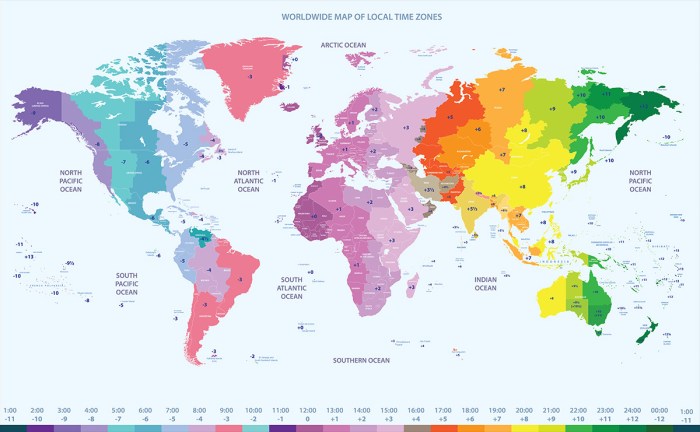What Are Time Zones and How Do They Work?

When it’s 6 p.m. in New York, that means it’s 5 p.m. in Chicago, 4 p.m. in Denver and 3 p.m. in Los Angeles. Understanding time zones and how they work is important, especially if you don’t want to miss the start of the big game or other live events.
WHY DO WE NEED TIME ZONES
The rotation of the earth makes it appear that the sun rises in the east, moves across the sky and sets in the west. However, this doesn’t happen at the same time in every location. People living on the East Coast of the United States will see the sun rise before people living on the West Coast.
THE HISTORY OF TIME ZONES
Before the days of trains and airplanes, most communities set their clocks to whatever made sense for their location. One town might decide to say it’s 7 a.m. when the sun comes up. Another town might decide that sunrise is at 7:30 a.m. A third town might agree that 7:30 a.m. is sunrise, but because of their location, sunrise didn’t actually happen at the same time as the other town. It was super confusing.
By the early 1880s, there were more than 144 local times in the United States! Throw in the different seasons, clock variations and other factors, and it was a big mess.
This confusion didn’t matter very much when everyone traveled by walking or horseback. When you arrived at a new town, you’d just adjust your watch. However, with the development of train travel, it became clear that something had to be done.
In 1883, the major railroads coordinated to develop four standard time zones across the United States. This helped them coordinate train schedules and gradually this system began to be used by everyone. These time zones were officially adopted by the U.S. government in 1918.
HOW DO TIME ZONES WORK?
The continental United States is divided into four time zones: Eastern, Central, Mountain and Pacific. There are also time zones for Alaska and Hawaii.
The Eastern, Central, Mountain and Pacific time zones are each an hour apart. Since the sun rises in the east, the Eastern time zone is always the latest in the day. So 8 a.m. in the Eastern time zone will be 7 a.m. in the Central time zone, 6 a.m. in the Mountain time zone and 5 a.m. in the Pacific time zone. Alaska would be 4 a.m. and Hawaii would be 3 a.m.
Makes sense? Here another example:
If you know the big game starts at 5 p.m. in the Central time zone, but you live in the Eastern time zone, just add an hour and turn your TV on at 6 p.m. EST. If you live in the Pacific time zone, subtract two hours and start watching at 3 p.m. PST.
WHAT ABOUT ARIZONA AND DAYLIGHT SAVING TIME?
Twice a year, everyone in the continental United States moves their clocks forward or backyard because of Daylight Saving Time. Everyone, that is, except Arizona. People in most of Arizona (except the Navajo Nation) don’t adjust their clocks for Daylight Saving Time. That means they could be the same time as either the Pacific or Mountain time zones, depending on the time of year. Hawaii and several other areas have the same issue.
WHAT ABOUT THE REST OF THE WORLD?
Time zones have been established for the entire world, not just the United States. To figure out the time in Honolulu or Tokyo or London or Nairobi, you’ll just need to find out how many time zones separate you from that location. Or you can Google, “What time is it in Tokyo?” and do it the easy way!

Thank you for that, makes total sense, when it’s straight up noon the sun is right above you but it cant be right above the next time zone because it hasnt reached the peak there yet. Any way that’s how I interpreted and made sense to me. Thanks so much.
I don’t understand it, but it makes more sense than the formal ones.
I have no clue, but I guess it sorta makes sense.
thank you